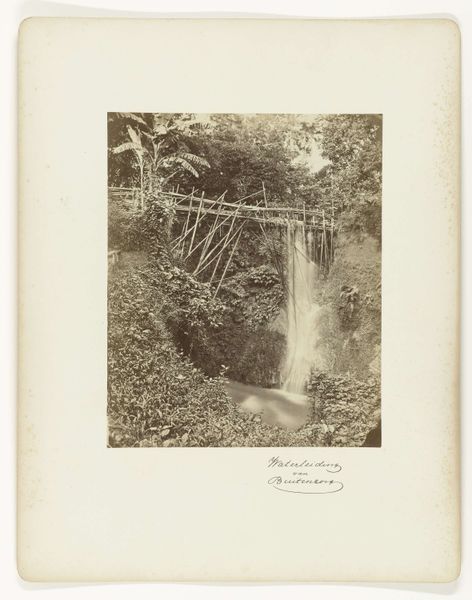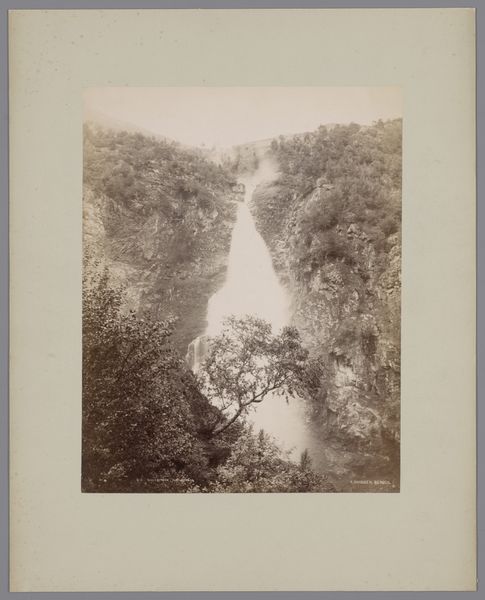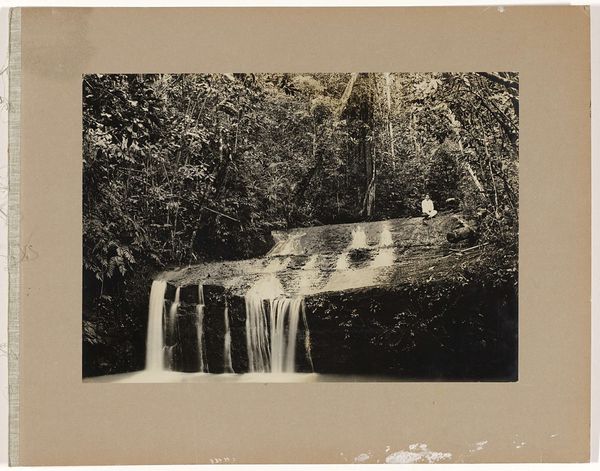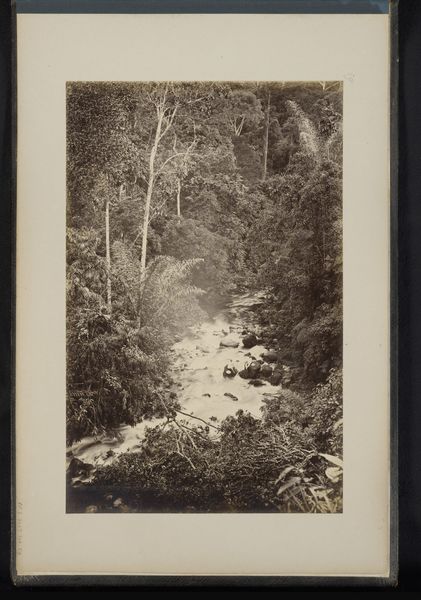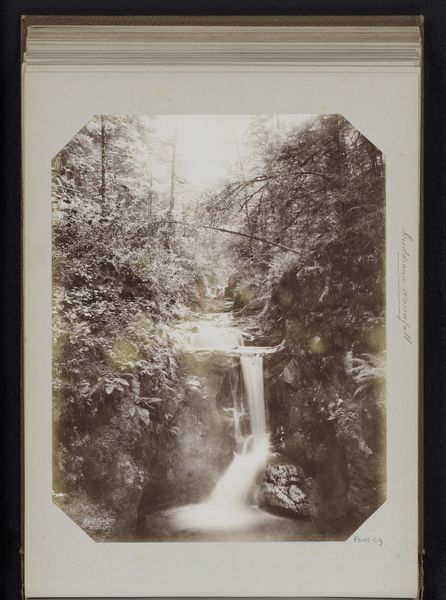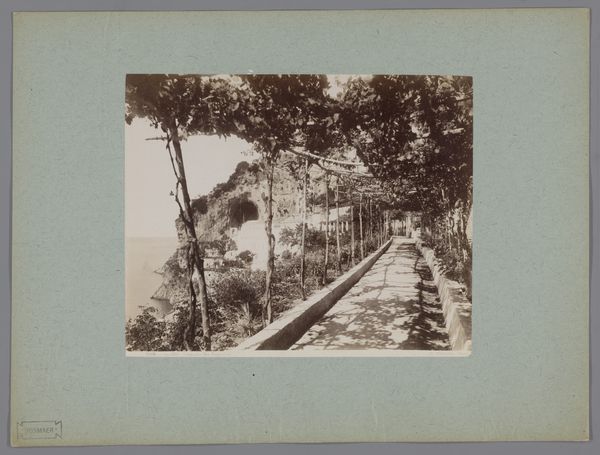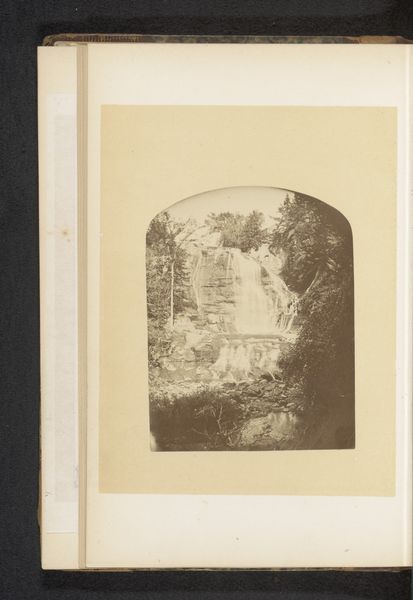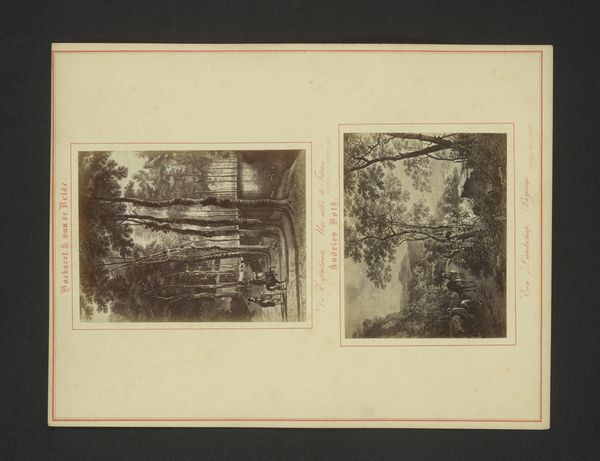
Dimensions: height 409 mm, width 314 mm, height 278 mm, width 224 mm
Copyright: Rijks Museum: Open Domain
Curator: Welcome. We're looking at Celestino Degoix's "Villa Pallaviani, La Cascata," an albumen print believed to have been made between 1850 and 1870. Editor: Oh, wow, that hits a sweet spot for me. It’s utterly romantic! Sort of brooding and still…it smells of damp earth and old stories, you know? Curator: The photograph utilizes a sophisticated structure, particularly in how Degoix arranges the layers of the landscape. The eye is drawn from the dark pool in the foreground, up through the cascading water, past the bridge, to be ultimately absorbed by the textures within the surrounding vegetation. The tonal gradations are key. Editor: Absolutely. It's a theatrical composition. The little bridge… it’s so inviting, like an entrance into a secret world. And that tiny waterfall, just peeking through! I love the way it frames that smaller cascade in shadow. Curator: Indeed, Degoix employs light and shadow strategically. Note the contrast between the sunlit pavilion on the right and the shadowed depths of the foliage on the left, it adds a dynamic tension and, notably, emphasizes the verticality in what could otherwise be read as a flatter, less compelling composition. Editor: It feels like he is exploring an older, grander narrative. It's less about recording a place than about suggesting… enchantment, longing perhaps. Or at least how small and inconsequential humans appear to the power of raw Nature. Curator: It exemplifies 19th-century landscape photography through its formalism, which served not just to record scenery, but to also establish symbolic or allegorical connections for the viewer. This photograph, rendered meticulously as an albumen print, becomes both document and carefully constructed pictorial space. Editor: For me, that stillness—the frozen moment—intensifies the sense of being somewhere lost in time, perhaps even displaced in memory, a space which remains so private… it hints that any narrative is somehow unfolding only within oneself. Curator: It is tempting to view the natural world as some stage for human emotion, but as an analysis of compositional structures shows, there is so much more than meets the eye at first blush. Editor: Fair point. I might still get lost in there, though.
Comments
No comments
Be the first to comment and join the conversation on the ultimate creative platform.
